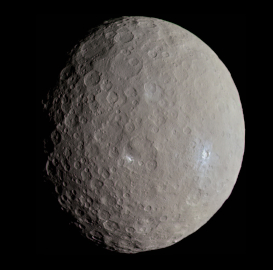- Series:Astronomy, Transcript English
Genesis 1:16b
“…he made the stars also.”
 In 1772, Johann Elert Bode, an astronomer from Hamburg, thought long and hard about the large gap that there seemed to be between the orbits of Mars and Jupiter. He proposed that there must be another planet in that gap that no one had yet discovered. In 1801, Guiseppe Piazzi thought that he had found it. He was actually cataloging stars in zodiac constellations when he came across one faint star that was moving and, therefore, had to be a planet. His discovery was given the name Ceres.
In 1772, Johann Elert Bode, an astronomer from Hamburg, thought long and hard about the large gap that there seemed to be between the orbits of Mars and Jupiter. He proposed that there must be another planet in that gap that no one had yet discovered. In 1801, Guiseppe Piazzi thought that he had found it. He was actually cataloging stars in zodiac constellations when he came across one faint star that was moving and, therefore, had to be a planet. His discovery was given the name Ceres.
It turned out, however, that this little world was not alone. Ceres was just the largest and the only spherical member of a large cluster of rocky objects between the orbits of Mars and Jupiter, now known as the asteroids.
Ceres is a small world, only 583 miles in diameter. It is one of the smallest objects in the solar system to be spherical in shape and is the largest of the asteroids. It is now officially classified as a dwarf planet. The surface of Ceres is heavily cratered, which makes sense when we realize that it has little atmosphere. One intriguing mystery is the presence of organic compounds in one site on the surface. Do not be misled – an organic compound today is one whose molecules contain at least carbon and hydrogen and does not imply that the molecule has ever been a part of a living, organic system.
God created astronomical objects for his glory – both great and small.
Prayer: We see Your handiwork, Lord and Father, in everything that You have created, and we thank You for the detail with which You designed everything, leaving nothing to chance.
Author: Paul F. Taylor
Ref: Ceres surprises, Creation 41(3):45, 2019. Image: CC BY-SA 2.0 Generic.
© 2020 Creation Moments. All rights reserved.
